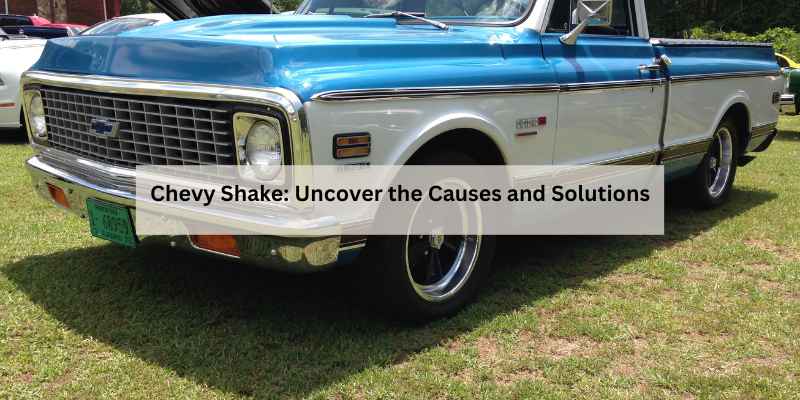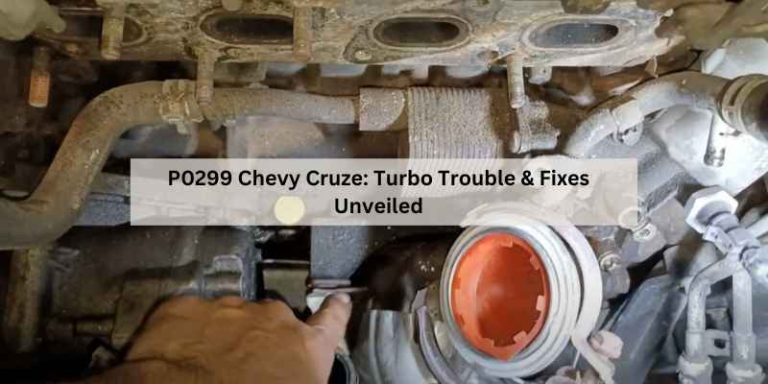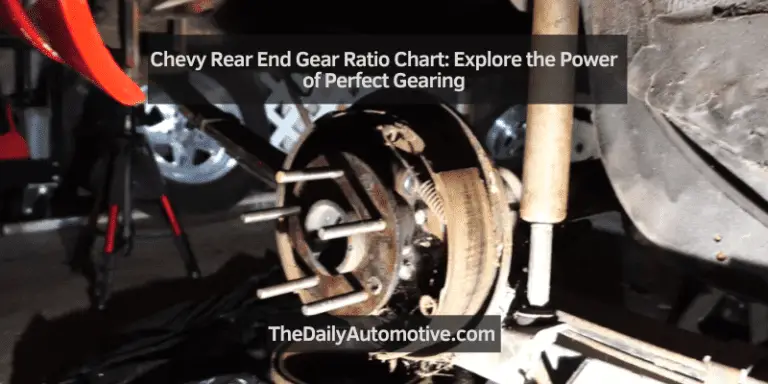Chevy Shake: Uncover the Causes and Solutions
**Chevy Shake refers to a noticeable vibration in Chevy vehicles, often felt in the steering wheel. This issue commonly arises from unbalanced tires or worn suspension components.
** The “Chevy Shake” phenomenon affects numerous Chevrolet vehicles, particularly the Silverado and GMC Sierra models. Drivers frequently report unsettling vibrations, especially at highway speeds. This shake can originate from various sources, including unbalanced tires, worn suspension parts, or drivetrain issues.
Many owners find this problem frustrating, as it can impact vehicle safety and comfort. While some solutions exist, such as wheel balancing and suspension repairs, they may not always provide permanent relief. Understanding the root causes of the Chevy Shake is crucial for effective troubleshooting. By addressing these issues early, drivers can enhance their vehicle’s performance and enjoy a smoother ride.
Introduction To The Chevy Shake Phenomenon
The Chevy Shake is a common problem affecting many Chevy vehicles. Drivers often experience vibrations and shaking, especially at higher speeds. This issue can be caused by unbalanced tires, worn-out CV joints, or broken engine mounts.
Many owners report that the steering wheel wobbles when they drive. This can be both annoying and concerning. The impact on drivers includes difficulty in maintaining control and a reduced sense of safety.
While some fixes exist, they may not always solve the problem completely. GM has provided service bulletins but has not issued a recall. It’s important for drivers experiencing the Chevy Shake to seek professional advice for proper diagnosis and repair. “`
Identifying The Causes Of The Chevy Shake
Unbalanced tires can significantly affect your Chevy’s performance. They lead to consistent vibrations while driving. This situation may cause the steering wheel to wobble. Regular tire rotation and balancing can help minimize these issues.
Transmission fluid problems are another common cause of the Chevy shake. Using the wrong viscosity can lead to shaking during acceleration. GM recommends replacing it with a lighter transmission fluid to ease the vibrations.
Worn CV joints also contribute to the shake. These components transfer power from the engine to the wheels. If they are damaged, the vehicle may shake at idle. Engine mounts play a crucial role too. Broken mounts can allow the engine to move excessively, causing vibrations.
Exploring The Chevrolet’s Response
Chevy Shake has garnered significant attention from vehicle owners. Many are frustrated due to the lack of a formal recall from GM. Instead, the company issued two service bulletins. These bulletins offer recommendations but do not provide permanent fixes.
Common causes of the Chevy Shake include unbalanced tires and worn CV joints. Both can lead to vibrations while driving. GM advises changing the original transmission fluid for better performance.
A class action lawsuit is currently under investigation. This lawsuit aims to address the ongoing issues related to the Chevy Shake. Owners hope for a resolution that ensures safe and smooth driving experiences.
Solutions And Fixes For Chevy Shake
Replacing transmission fluid can significantly help reduce Chevy shake. A lighter viscosity fluid may correct transmission issues. This simple step can enhance the overall driving experience.
Balancing and replacing tires should also be a priority. Uneven tire wear leads to vibrations. Ensure all tires are properly aligned and inflated for a smoother ride.
Checking and replacing CV joints is essential. Worn CV joints can cause shaking during acceleration. Inspect engine mounts as well; broken mounts can contribute to the problem.
Preventive Measures And Maintenance Tips
Regular vehicle inspections help ensure safety and performance. Checking for tire wear, brake function, and fluid levels can prevent issues. Addressing small problems early avoids larger repairs later.
Importance of wheel balancing cannot be overstated. Unbalanced tires create vibrations and lead to premature wear. Regular balancing can enhance tire life and improve driving comfort.
Maintaining transmission fluid is crucial for smooth operation. Old or dirty fluid may lead to shaking during acceleration. Regularly replacing this fluid can help maintain performance and extend the life of the transmission.
Chevy Shake In Popular Models
The Chevy Shake primarily affects the Silverado, causing noticeable vibrations. These vibrations often occur at highway speeds. Many owners report shaking in the steering wheel and seat. This issue is frustrating for drivers. Regular maintenance might help, but it does not always solve the problem.
Other models like the Tahoe and Traverse also experience similar issues. Drivers have reported a shaky ride in these vehicles as well. Unbalanced tires and worn-out parts might be contributing factors. Owners should have their vehicles checked regularly to ensure safety and comfort.
Owner Experiences And Community Support
Many Chevy owners share their experiences in various online forums. Personal stories reveal common issues and solutions. Vibration is a frequent complaint among drivers. Unbalanced tires often lead to a shaky ride. Some members suggest checking the steering components for any faults. Others emphasize the importance of regular maintenance.
Community support is a vital resource for Chevy owners. Forums provide a platform for sharing knowledge. Many users exchange tips on how to fix the Chevy shake. Some recommend replacing transmission fluid for smoother performance. Others discuss the role of worn CV joints in causing engine vibrations.
Overall, these discussions help build a supportive community. Sharing personal stories fosters understanding and connection among Chevy owners.
Looking Forward: The Future Of Chevy Shake
The future of Chevy Shake looks promising with manufacturer’s long-term solutions. Owners can expect more effective fixes to address the shaking issues. GM plans to focus on upgrading components that contribute to the problem. This includes improving the drivetrain and tire balancing systems.
Owners may also notice increased transparency in communication regarding service bulletins. This means better support and guidance for resolving issues. Regular updates from GM will help keep owners informed about any new developments. Overall, a commitment to quality and reliability remains a top priority for Chevy.
Frequently Asked Questions
What Is Causing The Chevy Shake?
The Chevy shake is often caused by unbalanced tires, which create vibrations during motion. Other factors include worn CV joints and broken engine mounts. These issues can lead to steering wheel wobbling and overall instability while driving. Regular maintenance can help prevent these problems.
Can You Fix The Chevy Shake?
Yes, the Chevy shake can be fixed. Common solutions include balancing tires, replacing worn components, and adjusting suspension settings. Consult a professional mechanic for the best approach tailored to your vehicle’s specific issues. Regular maintenance can also help prevent future problems.
Is Chevy Shake A Recall?
No, Chevy Shake is not a recall. GM has issued service bulletins to address the issue but has not implemented a recall.
Why Is My Chevy Engine Shaking?
Chevy engine shaking can result from various issues. Common causes include worn CV joints, unbalanced tires, or broken engine mounts. These problems lead to vibrations during idle or while driving. Regular maintenance and inspections can help identify and resolve these issues effectively.
Conclusion
Addressing the Chevy Shake issue is crucial for maintaining your vehicle’s performance and safety. Regular maintenance, including tire balancing and checking drivetrain components, can mitigate this problem. Understanding potential causes empowers you to seek timely repairs. Stay informed and proactive to ensure a smoother, safer driving experience in your Chevy.







